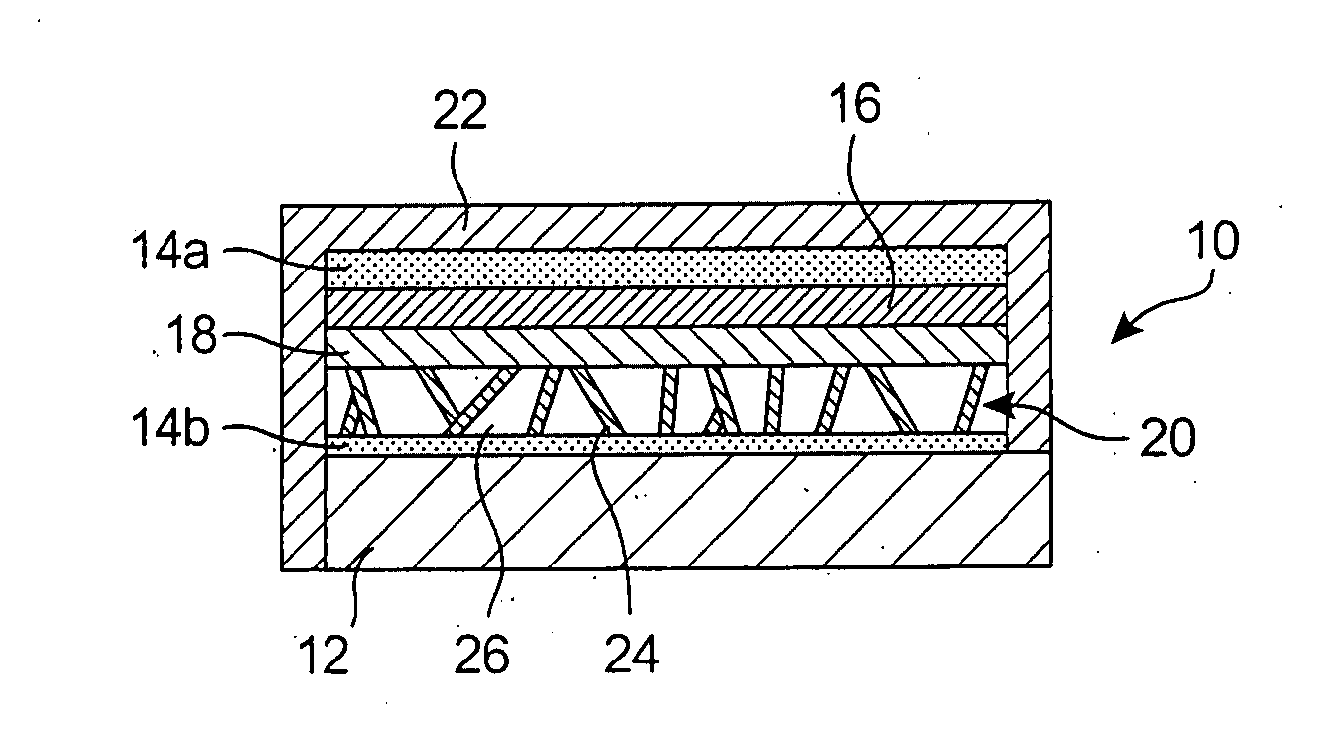Nanostructured Electrode for a Microbattery
a microbattery and nanostructure technology, applied in nanotechnology, non-aqueous electrolyte cells, vapour deposition manufacturing, etc., can solve the problems of limiting the potential use of the battery, affecting the reactivity of lithium metal with regard to the ambient atmosphere, and affecting the reactivity of lithium metal
- Summary
- Abstract
- Description
- Claims
- Application Information
AI Technical Summary
Benefits of technology
Problems solved by technology
Method used
Image
Examples
Embodiment Construction
[0020] As schematized in FIG. 1, a power storage device usually comprises a substrate 12, cathode 14a and anode 14b collectors (the latter may be integral with the substrate 12), a cathode 16, an electrolyte 18, and an anode 20. Moreover, the microbattery 10 may be protected by an encapsulation layer 22: the electrodes 16, 20, notably when they are in lithium, are indeed very reactive towards air, and it may be advantageous to also encapsulate the other components 14, 18.
[0021] The total thickness of the stack 14, 16, 18, 20 is usually between 10 and 50 μm, advantageously of the order of 15 μm. Such a microbattery 10, except for the anode 20 which will be described later on, may be made by any known technique, and in particular with different materials:
[0022] The current collectors 14 are metal and may for example be deposits based on Pt, Cr, Au, Ti.
[0023] The positive electrode 16 may notably consist of LiCoO2, LiNiO2, LiMn2O4, CuS, CuS2, WOySz, TiOySz, V2O5, deposited by a stan...
PUM
| Property | Measurement | Unit |
|---|---|---|
| diameter | aaaaa | aaaaa |
| diameter | aaaaa | aaaaa |
| diameter | aaaaa | aaaaa |
Abstract
Description
Claims
Application Information
 Login to View More
Login to View More - R&D
- Intellectual Property
- Life Sciences
- Materials
- Tech Scout
- Unparalleled Data Quality
- Higher Quality Content
- 60% Fewer Hallucinations
Browse by: Latest US Patents, China's latest patents, Technical Efficacy Thesaurus, Application Domain, Technology Topic, Popular Technical Reports.
© 2025 PatSnap. All rights reserved.Legal|Privacy policy|Modern Slavery Act Transparency Statement|Sitemap|About US| Contact US: help@patsnap.com


